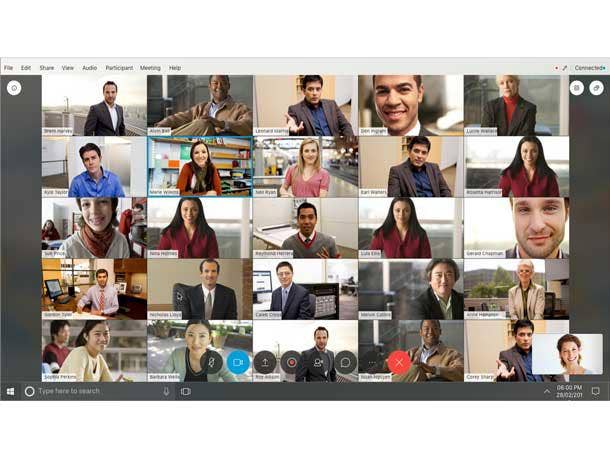Cisco Webex To ‘Regain Market Share’ Vs. Zoom Post-Pandemic, Execs Say
“We’re hearing customers saying, ‘We’re going to get to the other side of the pandemic and then make longer-term, strategic decisions about hybrid work.’ I think that’s where we’ll have the opportunity to actually regain market share in this space,’” says Cisco CEO Chuck Robbins.

Cisco continues to inject new features into its popular Webex collaboration platform in the midst of the global COVID-19 pandemic and plans to take back market share from the competition post-pandemic through a focus on security and inclusivity, Cisco executives said.
Collaboration business has been booming for partners over the past year, who have risen to the occasion by getting their customers up and running from home on video services and endpoints. Partners told CRN that they applaud Cisco’s efforts to continuously bolster the Webex platform with new features this year -- more than 400 features have been introduced in the last six months.
Still, one Cisco partner who spoke to CRN under the condition of anonymity said the company may have missed an opportunity to make Webex the top video platform at the start of a pandemic that sent millions of employees around the globe out of the office and into their home offices.
“I wish Cisco would have done a better job of capturing the mindshare last year and not let Zoom come in, out of nowhere. I’d like to see them get that back because I always thought Webex was the best platform for enterprise collaboration,” the partner said.
[Related: Cisco Webex People Insights Will Boost Well-being, Inclusivity, Says Execs]
Cisco may have been overshadowed at the onset of the pandemic as customer awareness grew quickly around tools like Zoom Video and Microsoft Teams. Post-pandemic, however, enterprises will be placing more of an emphasis on privacy, security and inclusivity, Cisco’s CEO Chuck Robbins told reporters and analysts at Cisco Live 2021.
“Clearly, it’s become a very competitive market over the last 15-18 months. We’re hearing customers saying, ‘We’re going to get to the other side of the pandemic and then make longer-term, strategic decisions about hybrid work,’” he said. “I think that’s where we’ll have the opportunity to actually regain market share in this space.”
Cisco Webex has more than 600 million monthly users globally and is connecting 6 billion calls per month, the San Jose, Calif.-based company told CRN.
Long term, Robbins said, it won’t be a competition for web conferencing market share. It will be a competition to build end-to-end architecture that will help businesses support the hybrid work model.
“Candidly, the governments around the world, when they decided to legislate over videoconferencing, whose [product] did they use? They are using ours, for obvious reasons, and I think that will become an issue for enterprises over time,” he said.
A safe return to the office will require collaboration services tied to other systems, including surveillance cameras and sensors for social distancing, said Jeetu Patel, Cisco’s senior vice president and general manager, security and applications Group, which houses the Webex division. “Someone might not be comfortable telling their boss that [the meeting] has exceeded capacity, but the system isn’t going to be shy,” he said. For full-time remote or hybrid workers, equipping the home office with the right collaboration equipment to keep employees productive long-term will also be critical, Patel said.
“All of these things, when you package them together, it’s a portfolio of hybrid work that frankly, no one else even comes close to matching. When you start thinking about the future of work and if we need it to be inclusive and frictionless with hardware and software fused together, there’s literally not a better company in the world that’s able to do that,” Patel told CRN.
It’s Cisco’s job to make sure it’s amplifying this message to the market, but eventually, the product will speak for itself, he said. “We will know in the next few months and years to come whether or not we’ve done the things we think are as wonderful as they are, and if our customers think so as well.”
When Cisco acquired Webex in 2007, no one anticipated that people would be using Webex the way people are today. Collaboration is another Cisco solution that can be offered up in a flexible, consumption-based model, in keeping with the company‘s commitment to transition the majority of its portfolio to as a service, said Raphael Meyerowitz, engineering vice president, Office of the CTO, for Cisco Master Partner Presidio.
“When you start thinking about hybrid cloud, security, networking, and collaboration, there‘s a lot of different products that can be offered as a service,” Meyerowitz said. “Customers are looking for simplification, whether it’s in their data center or the public cloud, and they are looking to consume and manage services the same way.”